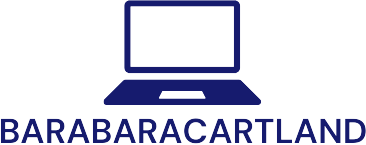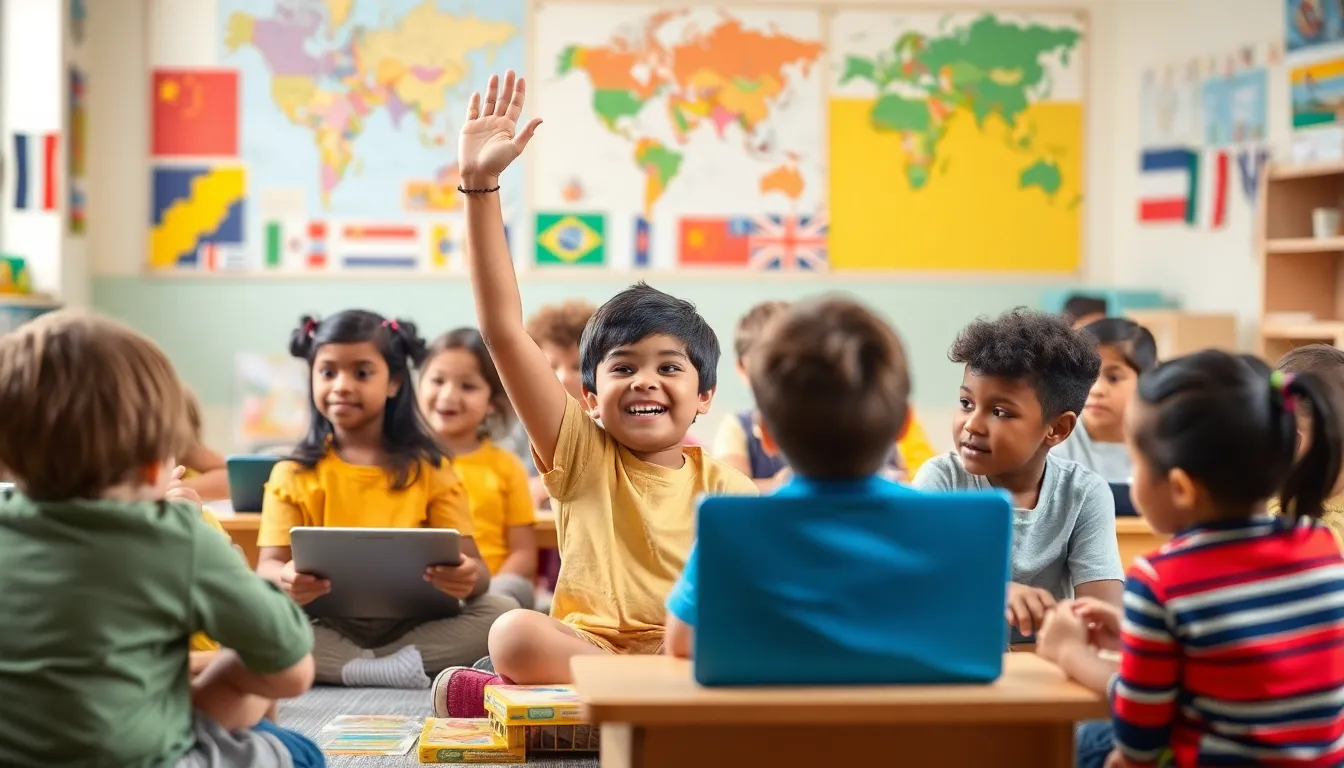Table of Contents
ToggleIn a world that’s becoming increasingly interconnected, teaching kids a new language isn’t just a nice-to-have—it’s a superpower. Imagine your child effortlessly chatting with friends from around the globe or impressing their teachers with their multilingual skills. Sounds like a scene from a superhero movie, right? Well, it doesn’t have to be fiction.
Overview of Language Learning for Kids
Learning a new language at a young age offers significant cognitive benefits. Research shows children who engage in language learning often exhibit improved problem-solving skills and enhanced creativity. Exposure to different languages also fosters cultural awareness, which enriches their understanding of the world.
Young learners typically absorb languages through immersive and interactive methods, which enhance retention. Programs that utilize storytelling, games, and songs capture children’s attention, making the process enjoyable. Studies indicate that kids are more likely to embrace language learning when it feels playful rather than challenging.
Fostering a multilingual environment at home complements formal education. Parents can support their children by incorporating foreign media, such as books and movies, into daily routines. Talking and singing in different languages at home strengthens their skills while building confidence.
Various language programs cater to young learners’ diverse needs. Online platforms, like Duolingo for Kids, provide gamified learning experiences that are engaging. Local language schools often offer classes tailored to different age groups, ensuring personalized attention.
Benefits extend beyond mere language acquisition. Children who learn new languages often display greater empathy, as they develop a deeper understanding of different cultures. They also participate more actively in global conversations, preparing them for future academic and career opportunities.
Choosing the right program depends on individual learning styles and preferences. Parents should assess factors such as curriculum, teaching methods, and the overall environment of the program before making a decision. Whatever the choice, starting early cultivates a lifelong appreciation for languages.
Criteria for Choosing the Best Language Programs

Selecting an effective language program for kids involves understanding several key criteria. Parents can evaluate these aspects to ensure a program meets their child’s needs and fosters a positive learning experience.
Curriculum Quality
Curriculum quality directly influences language acquisition success. Look for programs that incorporate age-appropriate materials, catering to diverse learning stages. Interactive resources, such as games and multimedia content, enhance engagement. Assessment tools also play a role, allowing parents to track progress. Programs that emphasize vocabulary development and conversational fluency contribute to a comprehensive learning experience. Check if the curriculum aligns with recognized language standards for children.
Teaching Methodologies
Teaching methodologies impact children’s retention and enthusiasm for learning. Immersive techniques, such as storytelling and role-playing, make learning relatable. Visual aids and hands-on activities encourage participation and reinforce concepts. Experienced instructors bring transformative teaching styles, fostering a supportive atmosphere. Programs utilizing a combination of these methods typically yield better engagement and results. Assess how each methodology aligns with your child’s learning preferences for optimal success.
Top Language Programs for Kids
Several excellent language programs exist for children, each designed to engage young learners and promote language acquisition effectively.
Program 1: Description and Features
Duolingo for Kids offers a playful approach to language learning. This platform combines interactive games and colorful graphics to capture children’s attention. It covers more than 30 languages, using bite-sized lessons that keep learners engaged. Gamification encourages kids to complete daily practice, reinforcing vocabulary and grammar concepts. Progress tracking features help parents monitor their child’s achievements. The platform supports multiple devices, ensuring accessibility and convenience.
Program 2: Description and Features
Rosetta Stone Kids emphasizes immersion by providing a natural learning environment. Engaging activities such as songs, stories, and games help develop listening and speaking skills. Kids can explore languages like Spanish and Mandarin through fun, age-appropriate content. The adaptive learning technology adjusts to each child’s pace, ensuring personalized experiences. Parents can access resources to support language practice at home. Progress reports also offer insights into learning milestones and areas needing improvement.
Program 3: Description and Features
Babbel for Kids incorporates real-life conversations into its curriculum. This approach helps children learn phrases and vocabulary relevant to their daily lives. Interactive lessons designed for young learners focus on speaking and comprehension. Multiple languages are available, catering to diverse interests. Lessons emphasize cultural context, enhancing children’s understanding of the language’s background. Parents can take advantage of progress tracking to stay informed about their child’s language journey.
Benefits of Learning a New Language Early
Learning a new language at a young age brings numerous cognitive advantages. Research indicates that bilingual children often display improved problem-solving skills. Enhanced creativity frequently emerges as they navigate between languages and cultures.
Cultural awareness forms another key benefit. Exposure to different languages enriches children’s understanding of diverse perspectives, helping them appreciate the world around them. They become more empathetic, allowing for better social interactions with peers globally.
Language acquisition methods are typically immersive and interactive for young learners. Techniques such as storytelling and hands-on activities make the learning process enjoyable and effective. Engaging with foreign media further reinforces language skills at home.
Preparing for future opportunities is crucial. Children proficient in multiple languages often enjoy broader academic and career prospects. Many employers value multilingualism, considering it a distinct advantage in a competitive job market.
People should also consider the impact on self-confidence. Mastering a new language empowers children to communicate and express themselves. This newfound confidence can translate to various aspects of their lives, fostering personal growth.
Supportive learning environments significantly enhance these benefits. Parents play a vital role by selecting appropriate programs that cater to their children’s needs. Choosing programs with age-appropriate materials and interactive resources ensures maximum engagement.
Ultimately, prioritizing early language learning sets the foundation for lifelong advantages. Investing in quality language programs not only cultivates language skills but also nurtures a love for learning about new cultures.
Investing in language programs for kids opens doors to a world of opportunities. By fostering communication skills and cultural awareness, these programs equip children with essential tools for their future. The cognitive benefits gained through language learning enhance creativity and problem-solving abilities, setting the stage for academic success.
Choosing the right program is crucial for maximizing these advantages. With options like Duolingo for Kids, Rosetta Stone Kids, and Babbel for Kids, parents can find engaging methods that resonate with their child’s learning style. By starting early and embracing the joy of language acquisition, children can thrive in an increasingly globalized society, ready to navigate diverse environments with confidence.




